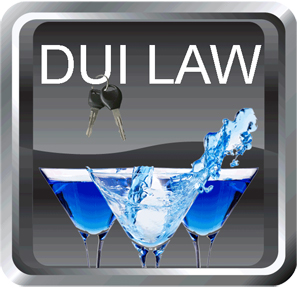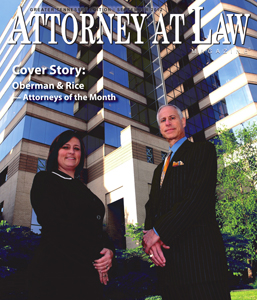The History of Field Sobriety Tests
Transcript of “The History of Field Sobriety Tests”
Author: Steven Oberman
Originally Posted: March 31, 2011
You see them on TV, you may even see people attempting them on the side of the road. Comedians call them “stupid people tricks”, but field sobriety tests have existed as long as the enforcement of DUI laws.
This is your host, Steve Oberman, and in this episode I will be discussing a very general summary of the history, the standardization and the validation of standardized field sobriety tests. In later episodes, I will provide a summary of each of the standardized field sobriety tests as well as some of the non-standardized tests.
For years, field sobriety tests varied among officers within the same law enforcement agency as well as from one agency to another. Field sobriety tests were limited only by the officers’ collective imaginations.
Today, most law enforcement agencies have adopted the field sobriety tests, which have been standardized and are therefore theoretically more objective than others. Non-standardized field sobriety tests, however, are not only mentioned, but are detailed in the officers’ DUI detection training manuals.
Allow me to first address the History and Background of these tests.
In the 1970's the United States National Highway Traffic Safety Administration (which you will sometimes hear me refer to by its initials as NHTSA), funded research to evaluate which roadside field sobriety tests were the most accurate. The research was conducted by the Southern California Research Institute (S.C.R.I.)
In the original study, six different tests were considered. These included the one-leg stand, finger-to-nose, finger count, walk-and-turn, tracing (which was a paper and pencil exercise), and both the vertical and horizontal gaze nystagmus tests.
The researchers finally concluded that a three test battery - the horizontal gaze nystagmus, the walk-and-turn, and the one-leg stand, offered a reliable field sobriety testing procedure to distinguish which persons had a blood level alcohol content above .10%. Subsequent studies (which I will later discuss) led NHTSA to conclude these tests were sufficiently reliable to distinguish blood level alcohol contents above .08%. It is important to note that these tests were not originally designed to determine if someone’s ability to drive was reduced below normal.
The next step was to standardize these tests. Additional research was therefore conducted to complete the development and validation of the field sobriety test battery and to assess the feasibility of the tests in the field. An additional study was performed in the field to validate the three tests outside a laboratory setting and to systematize the administrative and scoring procedures.
Defense lawyers, including myself, have suggested that the conclusions of these studies may be flawed in some respects. In particular, the conclusions regarding accuracy are heavily weighted by the large number of subjects with very high blood alcohol levels. A statistical analysis of the original data indicates that the accuracy of the standardized field sobriety tests depends on the blood level alcohol content and is much lower than that indicated in the original studies. However, the standardized field sobriety tests may be more useful in identifying subjects with a blood alcohol level substantially greater than 0.08%.
Allow me to next address the Standardization of these tests.
We call these standardized field sobriety tests, but what is really standardized? Well generally, three things:
- The administration of the tests. This means that the tests must be always administered in the same manner. This includes standardization of the location where the tests are given;
- The officer administering these tests should always look for a specific set of clues unique to each test; and
- The officer must score each test using the standardized scoring system.
So, to review, the tests must be given the same way each time, only certain clues count, and the tests must be scored according to the guidelines.
Now, I would be derelict in my duties if I neglected to discuss the three additional studies on the standardized Field Sobriety Tests funded by NHTSA in the late 1990's. According to NHTSA, the results of these studies provide clear evidence of the validity of the tests. NHTSA further stated that the studies support arrest decisions at “above or below” .08% and that the results strongly suggest that the sobriety test battery accurately determines blood alcohol concentrations at .04% and above. However, the validity of these tests has been criticized and the legitimate scientific value has been questioned.
Finally, allow me to address the validation of these tests.
Above all, persons studying the validation of the standardized field sobriety tests should note this major point from the manual. Allow me to paraphrase:
“It is necessary to emphasize that validation applies:
- Only when the tests are administered in the prescribed, standardized manner;
- Only when the standardized clues are used to assess the suspect’s performance; and
- Only when the standardized criteria, that is the scoring system, is employed to interpret that performance.
If any one of the standardized field sobriety test elements is changed, the validity is compromised.”
So, now you have learned more about the history, standardization and validation of the DUI standardized field sobriety tests. This is your host, Steve Oberman, inviting you to join us next time to learn more about the issues relating to the crime of Driving Under the Influence of an Intoxicant.
We hope you enjoyed listening to the DUI law podcast1 produced by the Oberman and Rice Law Firm. You may read about related legal matter on our websites at http://www.tndui.com and http://www.duiknoxville.com or visit our blog at http://www.tnduicenter.com. You may also speak to one of our lawyers by calling (865) 249-7200. Until next time, remember to drive safely.
Portions of this podcast were taken from Mr. Oberman’s text, DUI: The Crime and Consequences, Published by West/Thomson Reuters, 2011.See http://www.tndui.com/oberman-dui-textbooks.php#tndui









 Site Optimized by:
Site Optimized by: